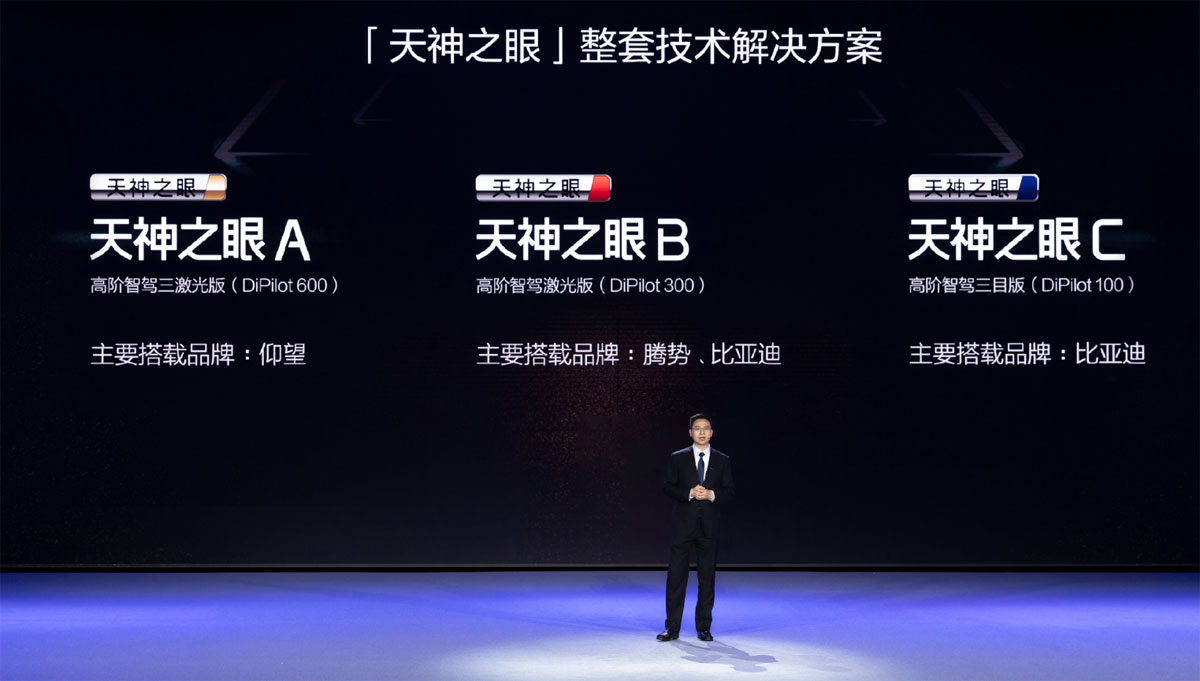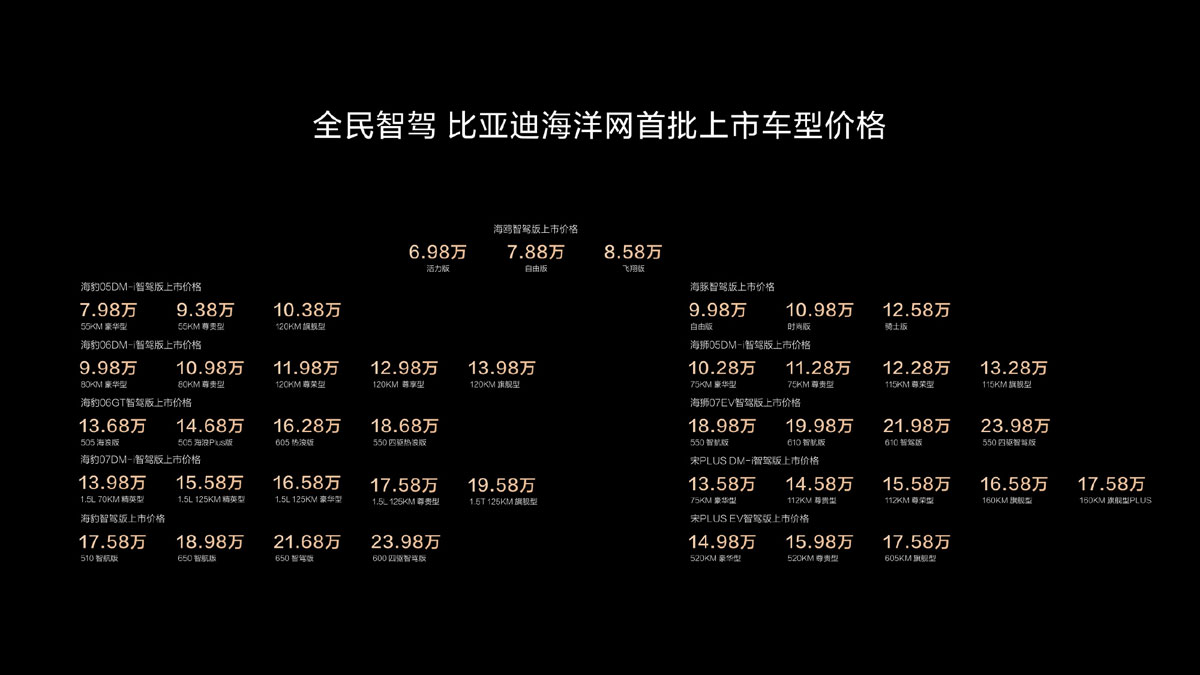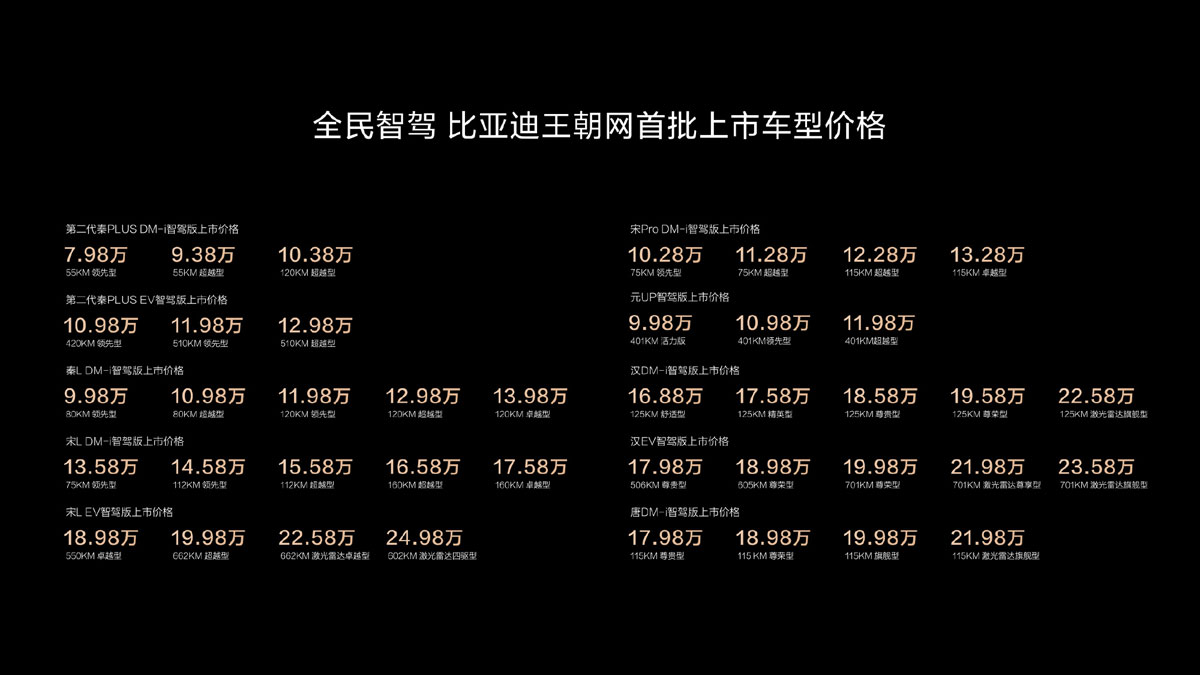BYD’s “God’s Eye” driving assistance system is designed to bring advanced intelligent driving features to a wide range of its vehicles, including budget-friendly options. The system will be available across multiple tiers, with the entry-level BYD Seagull hatchback, priced at 69,800 yuan (approximately 9,550 USD), also featuring the technology. The “God’s Eye” system will be offered in three variants, with up to three LiDAR sensors, depending on the model.
In 2024, BYD reported a daily training mileage of 72 million kilometers for its ADAS (Advanced Driver Assistance System), providing a solid foundation for the development of the “God’s Eye” system. According to the company, intelligent driving is expected to become a standard feature in vehicles within the next two to three years.
See also: Shares in Xpeng and Geely Fall as BYD Offers Smart Driving Features Across Its Lineup for Free

Three Levels of Intelligent Driving Assistance
The “God’s Eye” system is categorized into three levels to cater to different vehicle segments. The entry-level version, “God’s Eye C,” uses a cluster of three cameras placed behind the windshield and is powered by the DiPilot 100 system, which has a peak computing power of 100 TOPS (Tera Operations Per Second). It also includes 12 cameras, 5 mm-wave radars, and 12 ultrasonic radars, providing 360-degree perception. The front radar has a detection range of 300 meters, and the ultrasonic sensors offer a high degree of parking accuracy.
See also: BYD to Roll Out ‘God’s Eye’ Autonomous Features to More Affordable EVs
The second tier, “God’s Eye B,” enhances the system with the addition of a LiDAR sensor, which improves the system’s ability to perceive its surroundings. This version will be available in models such as those from the Denza and Fang Cheng Bao brands, as well as some high-end BYD models. The “God’s Eye B” system is powered by the DiPilot 300 system, offering 300 TOPS of computing power.
The top-tier system, “God’s Eye A,” incorporates three LiDAR sensors and is powered by the DiPilot 600 system, which provides 600 TOPS of computing power. This version will be available in BYD’s luxury Yangwang brand and is intended to offer more advanced autonomous driving capabilities.
See also: BYD Officially Introduces Atto 2 in Europe with Two Trim Levels and 312 km Range

Integrated AI Architecture
One of the key features of BYD’s “God’s Eye” system is its integration with the Xuanji architecture, which connects the vehicle to both cloud and vehicle-side artificial intelligence (AI) systems. This architecture includes key components such as the Internet of Vehicles, 5G network, satellite network, and several data and control chains. The system is designed to receive updates and improvements over time through over-the-air (OTA) updates.
The entry-level “God’s Eye C” system currently supports high-speed Navigation on Autopilot (NOA), with plans for future updates to include city-level NOA functionality. Meanwhile, the higher-tier “God’s Eye A” and “God’s Eye B” systems already support both city and highway NOA capabilities.

Demonstrating Autonomous Capabilities
BYD has also showcased the capabilities of the “God’s Eye A” system by demonstrating a Yangwang U9 supercar equipped with the technology driving on a racing track without a driver. This demonstration highlights the system’s potential in more complex driving environments, suggesting that autonomous vehicles may one day handle a wide range of driving tasks.
With plans to equip all models across its range, from the affordable Seagull to the high-end Yangwang U9, BYD’s “God’s Eye” system aims to make intelligent driving more accessible while pushing the development of autonomous driving technology forward. The introduction of this system is part of BYD’s broader strategy to integrate advanced technology into its vehicles, providing a more connected and autonomous driving experience.
